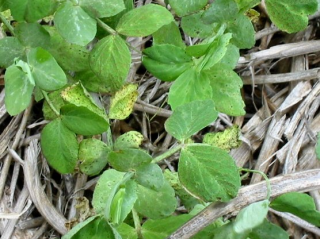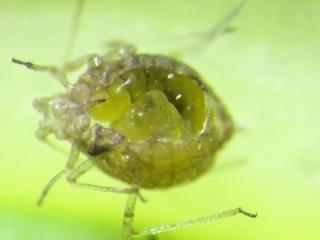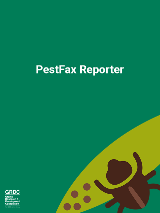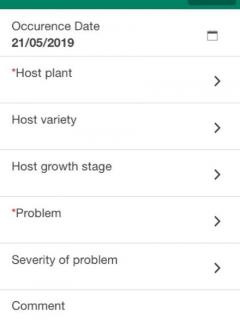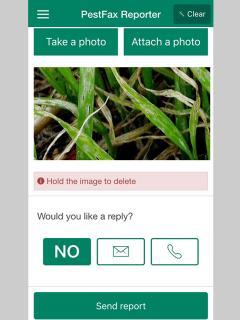Updated field pea blackspot sowing guide for WA available online
DPIRD has a new field pea blackspot sowing guide for Western Australia available online. It is current to Monday 20 May.
The blackspot risk level has dropped to medium at Jacup and Gardiner due to rainfall being experienced and it is now safe to sow field pea at these two locations. Growers are advised not to sow field pea dry but.
It is still marginally too early to sow at Mount Barker this week, however the blackspot risk forecast is low and field pea can be sown at this location from next week onwards.
At all other locations there has been insufficient rainfall this season to mature the blackspot fruiting bodies and the blackspot risk is high for areas where field pea has been grown in the past three years. We recommend that growers delay sowing field peas in all these locations.
For more details on the latest forecast refer to the department's Field pea blackspot sowing guide for Western Australia - 20 May 2019.
Blackspot becomes established when spores of the fungi produced on old field pea stubble are carried into the new crop by wind after rain events. Infection may occur at any stage of plant growth.
DPIRD’s Blackspot Manager is a model that predicts the maturity and release of blackspot spores using weather data from the nearest weather station. Advice is then given on when it is safe to sow field pea.
Growers and consultants can regularly check their locations blackspot risk as updated forecasts are available weekly at the department’s Blackspot in field peas disease forecast 2019 page.
For more information on blackspot refer to the department’s Diagnosing blackspot in field peas page.
To subscribe to the free blackspot SMS service, text 'blackspot', your name and nearest weather station to 0475 959 932 or email Blackspot.Manager@dpird.wa.gov.au to subscribe to the direct email service.
For more information on blackspot in field peas or the forecasts contact Jean Galloway, Research Officer, Northam on +61 (0)8 9690 2172.
Aphid parasitoid wasps: what’s out there and how you can help researchers find out more about them
Parasitoid wasps can be extraordinarily useful in controlling aphids in grain crops. Unlike predators, they do not feed on the aphid, but use the pest to reproduce. Free-living wasps insert their modified sting (‘ovipositor’) into the aphid to lay their egg. As the larva grows it feeds on the aphid from inside, creating the recognisable golden/brown, engorged body, called a ‘mummy’.
Aphidiine parasitoid wasps attack many aphid species, both immature and adult, winged and unwinged. However, little is known about them in an Australian context. Such as; what species are out there? Where are they found? When do they move into grain crops? Where do they go after harvest? Do the species differ around Australia?
University of Melbourne PhD student Samantha Ward aims to answer these questions.
With the assistance of GRDC funding, Sam has travelled extensively around Victoria, monitoring the aphid parasitoid populations over two growing seasons to identify the diversity and abundance of wasps present. Samples have been received and identified from NSW, SA, TAS and WA. DPIRD staff are assisting this research by collecting and submitting samples this season and they have done collections in the previous 2 seasons.
From Sam’s work, one trend is clear – one species of wasp dominates aphid parasitism in Australia. That is, significantly more Diaeretiella rapae have been found parasitising grain aphids more than any other species; in some cases, comprising over 90% of all wasps reared from Sam’s collections.
Why Diaeretiella rapae is so abundant around Australia is not yet known! This wasp can be found worldwide, but the reasons for its success are a mystery.
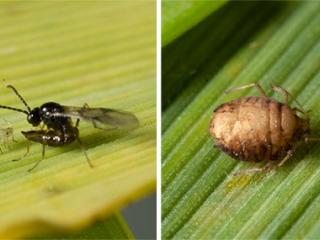
Your help is needed!
This project is continuing over the 2019 season and samples of mummified aphids from grain crops from all states, particularly Tasmania, are needed.
Samples can be sent in the mail. Please send them via express post on the day of collection, and not before a weekend. Postage costs can be reimbursed on request. For more information see cesar’s packaging instructions.
Please ensure there is a label inside the container and on the outside stating:
- Date collected
- Who collected the specimen
- Location of collected specimen (preferably the GPS co-ordinates)
- The crop from which the specimen was collected.
Sowing date, recent chemical history and/or the previous crop type would be a huge bonus! Recording sheets can be requested, if required.
Please send specimens to: Samantha Ward, Bio21 Institute, 30 Flemington Road, Parkville, VIC 3052.
For more information contact Samantha Ward, University of Melbourne PhD student on +61 (0)426 091 108.
PestFax Reporter app – an easy tool to identify and report crop and pasture pests and diseases
The PestFax Reporter app has been designed so users can quickly and easily identify or report any pests, diseases, weeds and other damage directly from the paddock.
The more reports that are received the more forewarned growers and consultants are of emerging pest issues in their areas. Reports submitted are displayed on the PestFax map and regularly referred to in the weekly PestFax newsletter during the growing season.
Reporting both the presence and absence of common disease or pests multiple times is encouraged so that a more detailed picture of the distribution and severity of a problem can be built up.
Where do I find the app?
It is a free app that is available for download from iTunes or Google Play.
How do I make a report?
Easy drop down selection lists help you to enter your information. You only need to enter the crop type and the problem and send the report. Any extra information about the situation that you can add, such as variety, growth stage of the crop and severity of the problem, will be appreciated.
What if I do not know what the insect or disease is?
Fill out as many drop-down fields as you can and in the 'Comments' section say that you require identification or add any extra information.
Users can upload a maximum of three photos. This is an easy process where you can take a photo during the report or attach a photo taken earlier. If you are not happy with the photo, press on the image to delete it and take it again. It is helpful if users can fill out any other information about the paddock scenario to assist DPIRD experts.
In the 'Would you like a reply?' section select the email icon or phone icon to request an email or telephone reply/diagnosis from a DPIRD expert.
How long does it take to fill out a report?
When used to the app reports can take as little as 20 seconds. If reporting the same insect or disease multiple times past reports can be updated with new information and submitted, saving even more time.
Do I need mobile coverage to submit reports?
No, users do not need mobile coverage. Fill out your report, click 'Send' and your phone will send it automatically when you return to an area with coverage.
Why should I bother reporting common insects and diseases?
Every report received is displayed on the PestFax map and helps build a comprehensive picture of cropping issues during the season. This helps growers, industry and the department to react quickly and with appropriate information to manage crop constraints.
For instructions on using the app and more information visit the department’s PestFax reporter page.
For more information contact Art Diggle, Senior Research Officer, South Perth on +61 (0)8 9368 3563.

